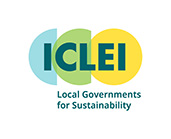
Source: DBDH, 2008
District heating
District heating is a system that delivers space heating and hot water to multiple customers through a pipe network. The heat can be produced at a central plant or at multiple locations, using different fuels, including renewable energy and waste heat. By replacing individual heating generation equipment in each building, the district heating system can deliver economies of scale in terms of capital, energy and maintenance costs.
District heating systems are based on well-proven technologies which have been implemented for decades. Simultaneously it offers an opportunity for a ground-breaking integrated systems-approach which contributes to reliability and affordability of heat and optimizes energy efficiency and the use of local renewable energy resources. The development of energy-efficient district energy systems in cities can be one of the least-cost and most effective solutions for reducing greenhouse gas emissions and primary energy demand.
Local governments are uniquely positioned to advance district energy systems in their various capacities: as planners and regulators, as facilitators of finance, as role models and advocates, and as large consumers of energy and providers of infrastructure and services.
The current Solutions Package aims to support local governments in taking an integrated systems-approach which contributes to reliability and affordability of district heating and to optimize energy efficiency and the use of local energy resources. Considering that cities have different district energy needs and resources, have particular urban development circumstances and can be in an initial or more advanced stage of development of district energy systems, this Package integrates several complementary Solutions to address the necessary specificities in terms of framework, market development, heat demand and local availability of energy resources, implementation process, and finance.
Video: District Energy, key to achieving low-carbon communities, developed by IDEA in partnership with UN Environment and ICLEI





